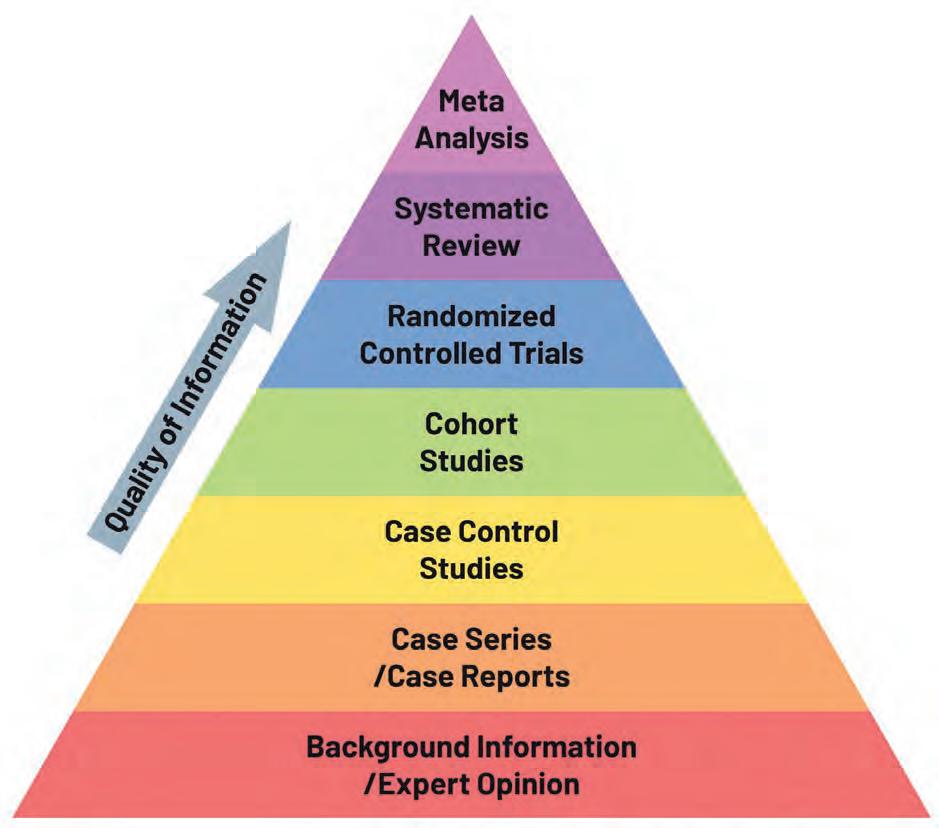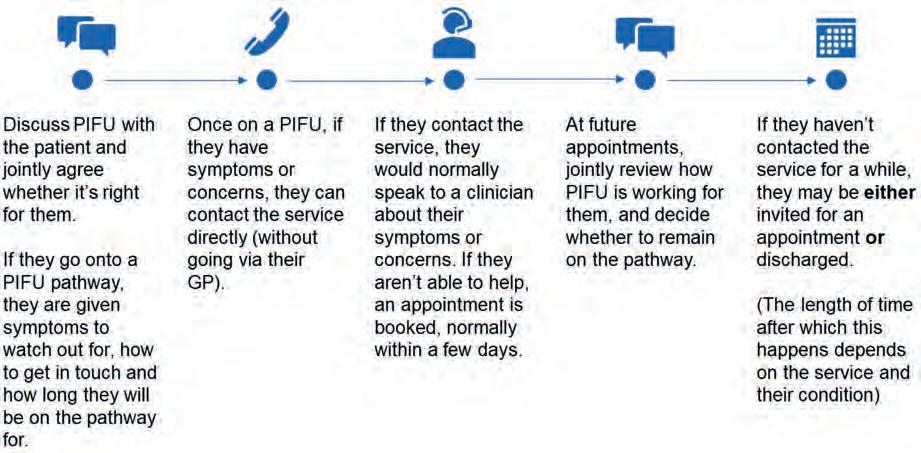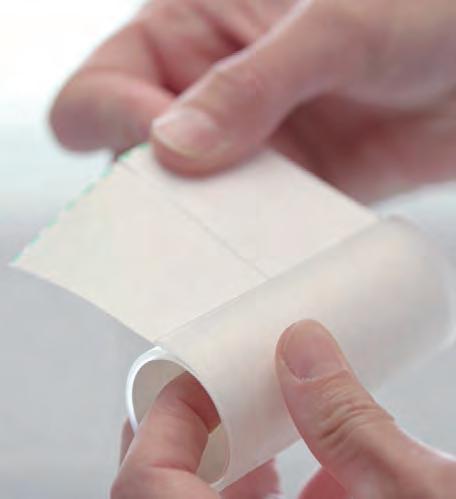
16 minute read
How does crystacide under duoderm work for molluscum contagiosum?
Humans are the only host for molluscum contagiosum (MC), a double-strand DNA virus belonging to the poxviridae family.1 Although there are at least four different genotypes: MCV1, MCV2, MCV3 and MCV4, infection with MCV1 is the most common, accounting for 76-97% of all clinical isolates.2 MC is transmitted either by close contact or indirectly via fomites (i.e. from a contaminated surface) and is a very common skin condition, especially in children, with one UK-based study finding that 90% of cases occurred in children aged 0-14 years with an incidence rate of 1,265/100,000.3 The diagnosis is based on clinical symptoms and MC presents as umbilicated, smooth, flesh-coloured, dome-shaped lesions that occur on areas of the skin such as the trunk, extremities, intertriginous regions, genitals and face. Lesions are largely asymptomatic but can be pruritic, and there is some evidence to suggest that MC is more likely in children with atopic eczema.4 MC is a benign, self-limiting condition with one study including 306 children finding that the mean time to resolution of a lesion was 13.3 months, although in 13% of children, lesions were still present after 24 months.5
Treatment
The need for treatment is controversial given that most cases of MC will spontaneously resolve. In fact, one study of 170 children with MC observed that after 12 – 17 months, the extent to which lesions completely cleared was similar between treated (23.9%) and untreated (24.2%) children.6 Nevertheless, many parents seek treatment, largely for cosmetic or social reasons, and interventions can be broadly categorised as either mechanical, e.g. cryotherapy and curettage, or chemical. There are a range of chemical treatments including potassium hydroxide, salicylic acid, tretinoin and cantharidin or immunomodulatory agents such as imiquimod. In a 2017 Cochrane review,7 it was concluded that “no single intervention has been shown to be convincingly effective in the treatment of molluscum contagiosum.”
Treatment with hydrogen peroxide
Products containing hydrogen peroxide are available for the treatment and prevention of superficial skin infections. The drug is used as an antiseptic agent in wound management and releases oxygen in the skin which contributes to its antimicrobial efficacy.8 The reason for the use of hydrogen peroxide as a treatment for MC is based on predominately in vitro evidence, indicating that many viruses such as swine flu, measles, rubella and rabies have been found to be sensitive to it.9 A further reason is the similarity in structure to benzoyl peroxide which, in a single study, was found to clear 90% of MC lesions.10 Moreover, current advice from the NHS recommends the use of benzoyl peroxide as a treatment for MC.11
The use of a twice-daily regime with 1% hydrogen peroxide cream (Crystacide) in MC was first reported in a 2003 study of 12 patients (mean age 18 years).12 After 21 days, eight patients experienced complete clearance of lesions, and in the remaining four a 70% reduction in lesion count was observed. Additionally, all patients were followedup for six months, during which time there was no recurrence of lesions.
The use of a 1% hydrogen peroxide cream under occlusion was reported in a single case study of an eight-month-old girl with MC lesions in the genital area.13 The parents were advised to apply the hydrogen peroxide cream after every nappy change for at least a week, and this led to a significant improvement in symptoms. While the mode of action of hydrogen peroxide is unclear, the authors suggested that it might be due to blockage of a specific MC protein. For example, it is known that MC encodes for more than 150 proteins, some of which might contribute to prolonged viral replication within the skin. MC66 is a selenocysteine containing protein produced by MC and which protects the virus against peroxide-induced damage.14 It is therefore possible that hydrogen peroxide is able to overcome the activity of MC66, hence resulting in viral death. The use of hydrogen peroxide under occlusion was explored in a more recent study, in which 21 immunocompetent children with a mean age of 5.3 years, applied a 1.8%
hydrogen peroxide gel twice daily to MC lesions for 21 days.15 Complete remission of lesions only occurred in three patients and lesion counts decreased in the majority of other children, yet the number actually increased in three patients. While in both studies the occlusive agent was not disclosed, duoderm is a hydrocolloid dressing with an outer film which forms a waterproof barrier over a wound and could therefore serve as a suitable covering.
In summary, while there is some, albeit limited, evidence to support the use of hydrogen peroxide in the treatment of MC, especially under occlusion, at the present time, whether or not duoderm represents the most suitable occlusive dressing remains unclear. DN
References
1. Meza-Romero R, Navarrete-Dechent C, Downey C. Molluscum contagiosum: an update and review of new perspectives in etiology, diagnosis, and treatment. Clin Cosmet Investig Dermatol 2019. 12:373-81 2. Trcko K, Hosnjak L, Kusar B, Zorec TM, Kocjan BJ, Krizmaric M, et al. Clinical, Histopathological, and Virological Evaluation of 203 Patients With a Clinical Diagnosis of Molluscum Contagiosum. Open Forum Infect Dis 2018. 5(11):ofy298 3. Pannell RS, Fleming DM, Cross KW. The incidence of molluscum contagiosum, scabies and lichen planus. Epidemiol Infect 2005. 133(6):985-91 4. Olsen JR, Piguet V, Gallacher J, Francis NA. Molluscum contagiosum and associations with atopic eczema in children: a retrospective longitudinal study in primary care. Br J Gen Pract. 2016. 66(642):e53-8 5. Olsen JR, Gallacher J, Finlay AY, Piguet V, Francis NA. Time to resolution and effect on quality of life of molluscum contagiosum in children in the UK: a prospective community cohort study. The Lancet Infectious Diseases 2015. 15(2):190-5 6. Basdag H, Rainer BM, Cohen BA. Molluscum contagiosum: to treat or not to treat? Experience with 170 children in an outpatient clinic setting in the northeastern United States. Pediatr Dermatol 2015. 32(3):353-7 7. van der Wouden JC, van der Sande R, Kruithof EJ, Sollie A, van Suijlekom-Smit LW, Koning S. Interventions for cutaneous molluscum contagiosum. Cochrane Database Syst Rev 2017. 5:CD004767 8. Murphy EC, Friedman AJ. Hydrogen peroxide and cutaneous biology: Translational applications, benefits, and risks. J Am Acad Dermatol 2019. 81(6):1379-86 9. Caruso AA, Del Prete A, Lazzarino AI. Hydrogen peroxide and viral infections: A literature review with research hypothesis definition in relation to the current covid-19 pandemic. Med Hypotheses 2020. 144:109910 10. Saryazdi S. The comparative efficacy of benzoyl peroxide 10% cream and tretinoin 0.05% cream in the treatment of molluscum contagiosum. Pediatric Dermatol 2004. 21:399 11. NHS. Molluscum contagiosum treatment 2021 [May 2021]. Available from: https://www.nhs.uk/ conditions/molluscum-contagiosum/treatment/ [last accessed June 2021] 12. Bigardi A MM. Successful treatment of molluscum contagiosum skin infection with hydrogen peroxide 1% cream. JEADV 2003. 17:419 13. Semkova K, Palamaras I, Robles W. Hydrogen peroxide 1% cream under occlusion for treatment of molluscum contagiosum in an 8-month-old infant: an effective and safe treatment option. Clin Exp Dermatol 2014. 39(4):560-1 14. Moss B SJ, Xiang Y et al. Immune-defense molecules of molluscum contagiosum virus, a human poxvirus. Trends Microbiol 2000. 8:473-7 15. Schianchi R, Nazzaro G, Veraldi S. Treatment of molluscum contagiosum with hydrogen peroxide. Clin Exp Dermatol 2018. 43(1):66-7
demonstrated sustained relief in psoriatic arthritis* out to 1 year and psoriasis† out to 5 years2-4

LIFE IS


*Sustained improvements in psoriatic arthritis disease severity (as measured by ACR scores, HAQ-DI scores and resolution of enthesitis and dactylitis). †Sustained improvements in psoriasis disease severity (as measured by PASI 90 scores)
Adverse events can be found in the prescribing information below. Please refer to the Tremfya® Summary of Product Characteristics for the full safety information before prescribing.1 Tremfya® is indicated for the treatment of moderate-to-severe plaque psoriasis in adults who are candidates for systemic therapy.1
Tremfya® is indicated in the treatment of active psoriatic arthritis in adult patients, alone or in combination with methotrexate, who have had an inadequate response or have been intolerant to a prior disease-modifying antirheumatic drug (DMARD) therapy.1
ACR20 improvements in the DISCOVER clinical trials: DISCOVER-2: At Week 24: Full analysis set: 64% for Tremfya® q8w (n=248) vs 33% for placebo (n=246; p<0.0001). At Week 52: NRI population. 74.6% for Tremfya® q8w (n=248). DISCOVER-1: At Week 24: Full analysis set: 52% for Tremfya® q8w (n=127) vs 22% for placebo (n=126; p<0.0001). At Week 52: NRI population. 59.8% for Tremfya®q8w (n=127).3-6 PASI 90 response at Week 252 in the VOYAGE 1 clinical trial (NRI through Week 48, TFR beyond): 84.1% for Tremfya® SC q8w (n=391).2

References: 1. Janssen-Cilag Ltd. Tremfya® Summary of Product Characteristics. Available at https://www.medicines.org.uk/emc/medicine/34321. Accessed January 2021. 2. Griffiths C, et al. Maintenance of Response Through 5 Years of Continuous Guselkumab Treatment: Results From the Phase 3 VOYAGE 1 Trial. Presented at the 16th Annual Coastal Dermatology Symposium. October 15-16, 2020 New Jersey, USA. 3. McInnes IB, et al. Arthritis Rheumatol. 2020 Oct 11. doi: 10.1002/art.41553. 4. Ritchlin C, et al. Guselkumab, an IL-23 Inhibitor That Specifically Binds to the IL23p19-Subunit, for Active Psoriatic Arthritis: One Year Results of a Phase 3, Randomized, Double-blind, Placebo controlled Study of Patients who Were Biologic-Naïve or TNFa Inhibitor- Experienced. Presented at EULAR 2020. 5. Mease PJ, et al. Lancet 2020;395:1126-1136. 6. Deodhar A, et al. Lancet. 2020;395:1115-1125. DISCOVER-1 was a multicentre, double-blind, randomised, placebo-controlled, Phase 3 trial enrolling adults with active PsA. About 30% of study participants could have previously received one or two TNF inhibitors.5 DISCOVER-2 was a multicentre, double-blind, randomised, placebo-controlled, Phase 3 trial in bio-naive patients with active PsA.6 VOYAGE 1 was a multicentre, double-blind, randomised, placebo- and active comparator-controlled study in patients with moderate to severe plaque psoriasis.2 PsO, psoriasis; PsA, psoriatic arthritis; HAQ-DI, Health Assessment Questionnaire Disability Index; TNF, tumour necrosis factor; TFR, treatment failure rules; PASI, Psoriasis Area Severity Index; NRI, non-responder imputation; SC, subcutaneous; ACR20, 20% improvement in the American College of Rheumatology Score.
TREMFYA® ▼ 100 mg solution for injection in pre-filled pen PRESCRIBING INFORMATION ACTIVE INGREDIENT(S): Guselkumab Please refer to Summary of Product Characteristics (SmPC) before prescribing. INDICATION(S): Treatment of moderate to severe plaque psoriasis in adults who are candidates for systemic therapy. Treatment of active psoriatic arthritis in adult patients, alone or in combination with methotrexate, who have had an inadequate response or have been intolerant to a prior disease-modifying antirheumatic drug (DMARD) therapy. DOSAGE & ADMINISTRATION: For use under guidance/supervision of physician experienced in diagnosis and treatment of conditions for which Tremfya is indicated. Subcutaneous injection. Avoid areas showing psoriasis. Adults: For both indications,100 mg at weeks 0 and 4, followed by maintenance dose every 8 weeks. In the case of psoriatic arthritis, for patients at high risk for joint damage according to clinical judgement, consider a dose of 100 mg every 4 weeks. Consider discontinuation if no response after 16 weeks of treatment for plaque psoriasis and after 24 weeks for psoriatic arthritis. Children: No data available in children/adolescents <18 years. Elderly: No dose adjustment required, limited information in subjects aged ≥ 65 years, very limited information > 75 years. Renal & Hepatic impairment: Not studied. CONTRAINDICATIONS: Serious hypersensitivity to active substance or excipients; clinically important, active infection. Refer to SmPC for full list of excipients. SPECIAL WARNINGS & PRECAUTIONS: Infections: Potential to increase risk. If signs/symptoms of clinically important chronic/acute infection occur, monitor closely and discontinue Tremfya until resolved. Tuberculosis: Evaluate patients for TB pretreatment; monitor for signs/symptoms of active TB during and after treatment. Consider anti-TB therapy prior to Tremfya if past history of latent/active TB and adequate treatment course not confirmed. Serious hypersensitivity reaction: Includes anaphylaxis. Some serious hypersensitivity reactions occurred several days after treatment and included urticaria and dyspnoea. If occurs, discontinue Tremfya immediately and initiate appropriate therapy. Hepatic Transaminase Elevations: An increased incidence of liver enzyme elevations has been observed in patients treated with Tremfya q4w compared to patients treated with Tremfya q8w or placebo. When prescribing Tremfya q4w in psoriatic arthritis, consider evaluating liver enzymes at baseline and thereafter according to routine patient management. If increases in ALT or AST are observed and drug-induced liver injury is suspected, Tremfya should be temporarily interrupted until this diagnosis is excluded. Immunisations: Consider completing all appropriate immunisations prior to Tremfya. Do not use live vaccines concurrently with Tremfya; no data available; before live vaccination, withhold Tremfya for at least 12 weeks and resume at least 2 weeks after vaccination. SIDE EFFECTS: Very common: Respiratory tract infection. Common: headache, diarrhoea, arthralgia, injection site reactions, transaminases increased. Other side effects: hypersensitivity, anaphylaxis, rash, gastroenteritis, herpes simplex infections, tinea infections, neutrophil count decreased, urticaria. Refer to SmPC for more detail on side effects. PREGNANCY: Avoid use of Tremfya; no data. Women of childbearing potential should use effective contraception during and for at least 12 weeks after treatment. LACTATION: It is unknown whether guselkumab is excreted in human milk. A decision should be made to discontinue, or abstain from initiating treatment with Tremfya taking into account the benefit of breast-feeding to the child and the benefit of Tremfya therapy to the woman. INTERACTIONS: No dose adjustment when co-administering with CYP450 substrates. Concomitant immunosuppressive therapy or phototherapy not evaluated. Refer to SmPC for full details of interactions. LEGAL CATEGORY: Prescription Only Medicine (POM) PRESENTATIONS, PACK SIZES, MARKETING AUTHORISATION NUMBER(S) & BASIC NHS COSTS
PRESENTATIONS PACK SIZES MARKETING AUTHORISATION NUMBER(S)
Pre-filled pen (100mg) X 1 EU/1/17/1234/002 MARKETING AUTHORISATION HOLDER: Janssen-Cilag International NV, Turnhoutseweg 30, B-2340 Beerse, Belgium. FURTHER INFORMATION IS AVAILABLE FROM: Janssen-Cilag Limited, 50-100 Holmers Farm Way, High Wycombe, Buckinghamshire, HP12 4EG, UK. Prescribing information last revised: November 2020
Adverse events should be reported. This medicinal product is subject to additional monitoring and it is therefore important to report any suspected adverse events related to this medicinal product. Reporting forms and information can be found at https://yellowcard.mhra.gov.uk/ or search for MHRA Yellow Card in the Google Play or Apple App Store. Adverse events should also be reported to Janssen-Cilag Limited on 01494 567447 or at dsafety@its.jnj.com.
Clear the way to a bright future EASY CHOICE, LASTING CHANGE
5 reasons to make ILUMETRI® your IL-23 of choice for patients with moderate-to-severe psoriasis
CONFIDENCE IN SUSTAINED EFFICACY

for up to 5 years.1 IMPROVED QUALITY OF LIFE
with more than 50% of patients (W28 responders) reporting that psoriasis no longer affected their lives after just 3 injections (DLQI 0/1 in 52% of n=299 patients).2
4x
CONVENIENT DOSING SCHEDULE
with only 4 injections per year during maintenance and flexible dosing to adapt to patient needs.3
CONSISTENT, FAVOURABLE SAFETY PROFILE
confirmed by 5-year data, with low rates of AEs of special interest,* including severe infections, malignancies and MACE.1 MORE COST EFFECTIVE
than other biologics,4† with flat pricing across doses.5
ILUMETRI®: UP TO 5 YEARS OF PROVEN PSORIASIS CONTROL FROM AN IL-231
AE, adverse event. DLQI, Dermatology Life Quality Index. IL, interleukin. MACE, major adverse cardiovascular events. W, week. * AEs of special interest also included malignancies, non-melanoma skin cancer, injection site reactions and drug-related hypersensitivity reactions.1 †When assessed at Week 28, compared with other targeted treatments that are usually assessed between 12 weeks and 16 weeks (such as brodalumab, guselkumab, ixekizumab, infliximab and secukinumab).4
Prescribing Information Please consult the Summary of Product Characteristics (SmPC) before prescribing. ▼ ILUMETRI® 100 mg solution for injection in pre-filled syringe. Active Ingredient: Each pre-filled syringe contains 100 mg of tildrakizumab in 1 ml. Tildrakizumab is a humanised IgG1/k monoclonal antibody produced in Chinese Hamster Ovary (CHO) cells by recombinant DNA technology. Indication: ILUMETRI is indicated for the treatment of adults with moderate to severe plaque psoriasis who are candidates for systemic therapy. Dosage and Administration: The recommended dose of ILUMETRI is 100 mg by subcutaneous injection at weeks 0, and 4 and every 12 weeks thereafter. In patients with certain characteristics (e.g. high disease burden, body weight ≥ 90 kg) 200 mg may provide greater efficacy. Consideration should be given to discontinuing treatment in patients who have shown no response after 28 weeks of treatment. Some patients with initial partial response may subsequently improve with continued treatment beyond 28 weeks. Injection sites should be alternated. Elderly: No dose adjustment is required. Paediatric population: No data available. Renal or hepatic Impairment: No dosage recommendations can be made. Consult SmPC and package leaflet for full method of administration. Contraindications, Precautions and Warnings: Contraindications: Hypersensitivity to the active substance or to any of the excipients listed in SmPC section 6.1. Clinically important active infection, e.g. active tuberculosis. Precautions: In order to improve traceability always record the batch number of the administered product. ILUMETRI may have the potential to increase the risk of infections. If a patient develops a serious infection, the patient should be closely monitored and treatment with ILUMETRI should not be administered until the infection resolves. Exercise caution in patients with a chronic infection or a history of recurrent or recent serious infection. Instruct patients to seek medical advice if signs or symptoms of an infection occur. Patients should be evaluated for tuberculosis (TB) prior to initiation of treatment and monitored for signs and symptoms of active TB during and after treatment. In patients with a past history of latent or active TB, consideration for anti-TB therapy should be given. Discontinue use if a serious hypersensitivity occurs. All appropriate immunisations should be completed prior to start of treatment with ILUMETRI. Patients treated with ILUMETRI should not receive live vaccine during treatment and for at least 17 weeks after treatment. Consult SmPC and package leaflet for more information. Fertility, pregnancy and lactation: Women of childbearing potential should use effective methods of contraception during treatment and for 17 weeks after treatment. As a precautionary measure, it is preferable to avoid the use of ILUMETRI during pregnancy. A decision must be made whether to discontinue breast-feeding or to discontinue/abstain from ILUMETRI therapy taking into account the benefit of breast-feeding for the child and the benefit of therapy for the woman. The effect of ILUMETRI on human fertility has not been evaluated. Consult SmPC and package leaflet for more information. Adverse Reactions: Very common (≥1/10):Upper respiratory tract infections, including nasopharyngitis. Common (≥1/100 to <1/10): Headache, gastroenteritis, nausea, diarrhoea, injection site pain, back pain. Consult SmPC and package leaflet for further information. Legal Category: Ireland: Subject to prescription which may not be renewed (A). United Kingdom: POM Price: United Kingdom: UK NHS Cost: (excluding VAT). 1 x 100 mg solution in a pre-filled syringe - £3,241 2 x 100 mg solution in a pre-filled syringe - £3,241 Marketing Authorisation Number(s): EU/1/18/1323/001 EU/1/18/1323/002 Further information available from: Almirall Limited, Harman House, 1 George Street, Uxbridge, Middlesex, UB8 1QQ, UK. Date of Revision: 05/2020 Item code: IE-ILU-2000011
UK-Adverse events should be reported. Reporting forms and information can be found at MHRA https://yellowcard.mhra.gov.uk Adverse events should be also reported to Almirall Ltd. Tel. 0800 0087 399
IE-Adverse events should be reported. Reporting forms and information can be found at HPRA Website: www.hpra.ie, email: medsafety@hpra.ie Adverse events should be also reported to Almirall Ltd. Tel. +353 (0) 1431 9836
References 1. Thaçi D, et al. Br J Dermatol 2021;10. DOI: 10.1111/bjd.19866. 2. Reich K, et al. Lancet 2017;15:276–288. 3. ILUMETRI® Summary of Product Characteristics. Almirall. 4. NICE. Tildrakizumab for treating moderate to severe plaque psoriasis. Available at: https://www.nice.org.uk/guidance/ta575. 5. ILUMETRI® MIMS. Available at: https://www.mims.co.uk/drugs/skin/psoriasis-seborrhoeaichthyosis/ilumetri.









